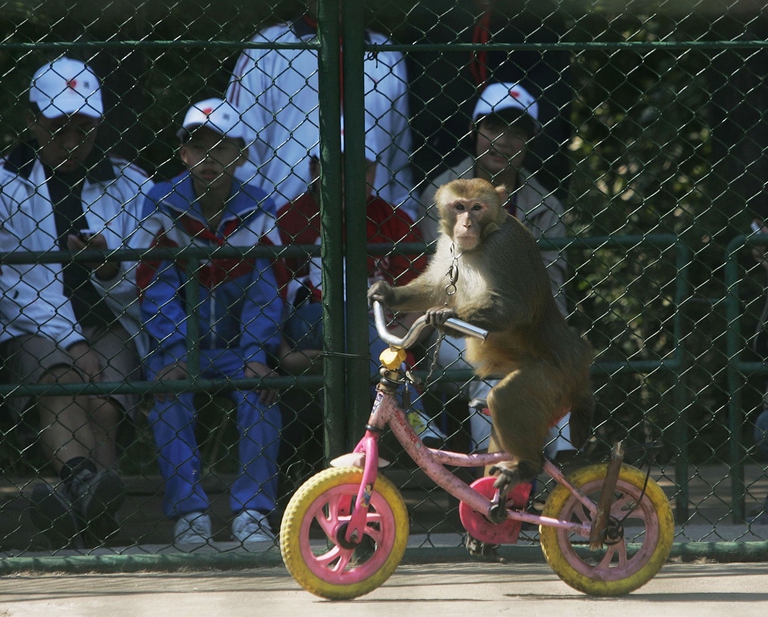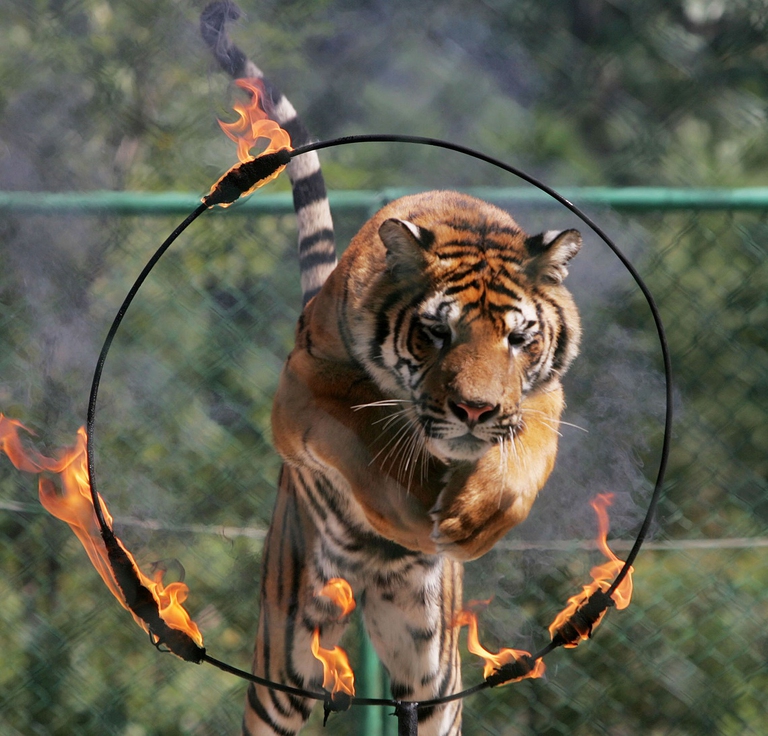
100,000 mink will be culled in Spain after testing positive for coronavirus. Meanwhile, the Netherlands abandons mink farming completely.
Il comune di Madrid ha finalmente deciso di vietare gli spettacoli di circo “con esibizione di animali selvatici”.
It seems quite grotesque that in 2017 some people are still willing to pay to see wild animals performing unnatural, humiliating and dangerous actions. It’s no secret that animals in circuses are kept in slavery, forced to endure physical and psychological sufferance and trained with coercive methods including violence and food deprivation. Fortunately, the number of visitors is dropping significantly and circuses are destined to disappear as an increasing number of cities all around the world are banning the use of wild animals in shows.
Just like dominoes, Madrid is the latest of a series of cities banning animal shows around the world. The municipality of Madrid led by Mayor Manuela Carmena, elected with the party Podemos, has banned circus shows with wild animals. “Animals have the right not to be subjected to cruel acts that cause them sufferance, anxiety and stress,” reads the draft law that bans animals in circuses. Madrid is the last of 300 Spanish cities, including Barcelona and Cadiz, to ban this kind of show.
The ban, voted by the majority of the Municipal Plenary, represents a victory for animals and the organisations that have been fighting for animal rights for years. “In circuses, animals live in captivity and are kept in cages where they can hardly move, against their most basic physical needs,” said the spokesman of the party Ahora Madrid. “Despite some of the animals are born in captivity, they still have natural instincts that trainers want to eliminate, forcing them to act unnaturally”.
Numerous countries in South America and Central America have adopted similar legislations demonstrating higher awareness than the rest of the world. Bolivia paved the way in 2009 (also banning the use of pets), and Peru, Paraguay, Costa Rica, El Salvador, Colombia, Mexico, and Brazil followed suit. Ecuador and Chile could soon join them.
While numerous cities and countries are banning circus with wild animals, Italy takes the opposite direction. It recently decided to increase funds destined to these shows. Despite most of Italians are contrary to circuses with animals (71.4 per cent of the population according to Eurispes), the government increased funds to circuses, from 4.5 million euros in 2016 to 4.9 million in 2017. Fortunately, many Italian municipalities and provinces have banned circuses with wild animals, but a national law is needed for them to enter into force.
Siamo anche su WhatsApp. Segui il canale ufficiale LifeGate per restare aggiornata, aggiornato sulle ultime notizie e sulle nostre attività.
![]()
Quest'opera è distribuita con Licenza Creative Commons Attribuzione - Non commerciale - Non opere derivate 4.0 Internazionale.
100,000 mink will be culled in Spain after testing positive for coronavirus. Meanwhile, the Netherlands abandons mink farming completely.
The dog meat festival in Yulin – where ten thousand cats and dogs are butchered – is taking place this year, notwithstanding the coronavirus pandemic.
Joaquin Phoenix, who won Best Actor at the 2020 Oscars, reminded us that we need to overcome our egocentric view of the world, and rather choose love and compassion towards others and the natural world.
Let’s look at the reasons behind the growth of veganism in India, as a small yet vocal section of the population turns towards this diet and lifestyle in the largest milk producing country in the world.
Refusing the anthropocentric vision and respecting the laws of ecology is the only way to safeguard the future of our and all other species, Sea Shepherd President Paul Watson argues in this op-ed.
The 2019 edition of International Mountain Day is “Mountains matter for youth”, highlighting the need to bring young people back to highland areas to take care of their cultural and natural resources.
Thanks to an undercover investigation, two organisations documented multiple violations of animal welfare laws at a laboratory in Hamburg.
Oggi è la Giornata mondiale della tolleranza, proclamata dalle Nazioni Unite per ricordare i principi ispiratori della Dichiarazione universale dei diritti dell’ uomo.
Saving soil, water, greenhouse gases and animal lives without giving up the taste of meat. This is Beyond Meat’s gamble. We spoke to chairman Seth Goldman about why the switch to plant based meat alternatives is paying off.










